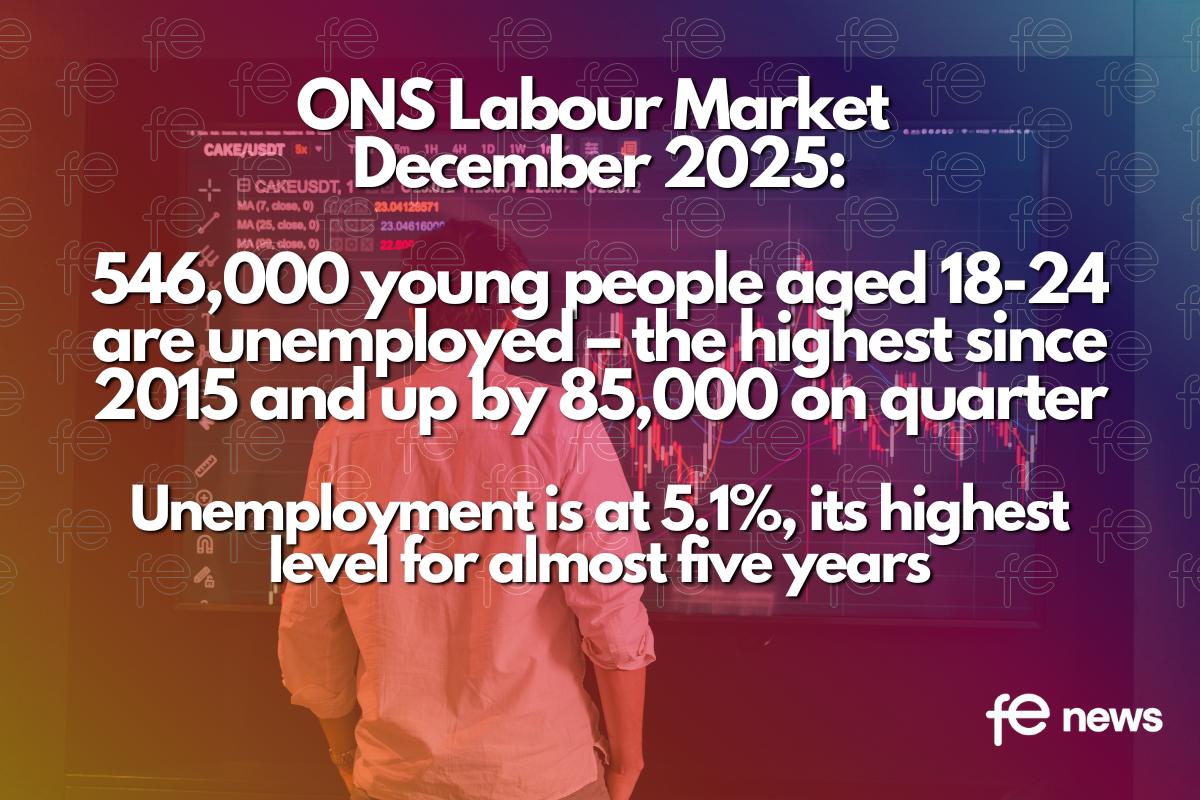Too many young people missing out on education and employment #LWYouthCommission

England’s six million young people stay in education for longer than previous generations, and most find their feet in the world of work.
But too many still miss out, with more than one in ten 16-24-year olds not in education, employment or training.
Learning and Work Institute’s new Youth Opportunity Index, published yesterday (25 Oct), shows how young people have varying chances of success depending on where they live.
Our Youth Opportunity Index created a relative measure of education and
employment outcomes for young people across England’s local authorities.Discover the best and worst ranked authorities for each of the seven indexes https://t.co/YPJcogtOfd #LWYouthCommission pic.twitter.com/9pPN8WfNm3
— Learning and Work Institute (@LearnWorkUK) November 16, 2018
It combines new data and analysis on education and training, including achievement at age 16 (Key Stage 4), attainment of A Level equivalent by age 19, access to higher education, take up of apprenticeships and the number of 16-17-year olds not in education, employment or training.
The Index also includes the employment rate of young people and new data on net underemployment – the number of young people wanting to work more hours.
Overall the Index shows no clear north-south or urban-rural divide in young people’s opportunities; instead the differences within regions are at least as large as those between regions.
Poverty and deprivation are the clearest predictors of poorer performance in the Index, but even here there are exceptions.
London’s boroughs are the main success story, with Sutton coming first in the Index and a further nine boroughs being in the top 20.
This largely reflects outstanding success over recent decades in improving the school and education system in London.
Other key successes include the proportion of young people in Cumbria taking up apprenticeships (more than 4%) and Trafford’s high attainment at GCSE and A Level equivalent.
Meanwhile, areas such as Bracknell Forest and Surrey have scored well on the employment and net underemployment measures.
In contrast, Nottingham is bottom of the overall list and some areas score poorly on individual measures.
For example, apprenticeship take up is less than 1% in some London boroughs while areas like Hartlepool and Telford and Wrekin have relatively low employment for young people and high net underemployment.
The Index rankings are driven by the strength of local economies, socioeconomic factors and national policies, as well as local services.
They reflect education and employment outcomes for young people living in particular areas, not just the success of those local education authorities.
 Stephen Evans, chief executive, Learning and Work Institute said:
Stephen Evans, chief executive, Learning and Work Institute said:
“Our new Youth Opportunity Index shows that young people’s life chances are directly affected by where they live. This is a basic unfairness and this new report shows where efforts need to be focused. London may be the biggest success story, but there are success stories in every region.
“The Index shows how education and employment outcomes vary across the country and identifies the key opportunity gaps. We hope that it will help local authorities and others to prioritise their focus and target their policy efforts to ensure all young people get a good start and fair chance in life.”
 Cllr Stephen Lambert and director of Education4Democracy CIC, said:
Cllr Stephen Lambert and director of Education4Democracy CIC, said:
“This is an important and timely report. Despite much inward economic investment the North of England lags behind much of the UK in terms of employment reducing the number of NEETs young people progressing to higher education and high quality apprenticeships.
“Local authorities across the North of England working with post-16 educational providers and the business community are fully signed up to boosting opportunities for young adults. Devolved authorities and elected Mayors both in the North West and the North of Tyne of devolution deal will place these issues firmly at the top of the agenda.”
 Tom West, Head of Impact, Big Youth Group, said:
Tom West, Head of Impact, Big Youth Group, said:
“The findings of the Youth Opportunity Index prove to me the importance of working on a local level. Every area has different needs and factors that should be addressed on a tailored basis. Combining focused local projects and with the resources required to fulfil these needs is the best way to have an overall national impact.
“This is also important to reciprocate at the student level. Every student is at a different stage and requires individual interventions to improve their outcomes. It is important that we aim to provide personalised support for every student to give them the platform they need to achieve their chosen pathway.”
Interactive Youth Opportunity Index Map
Youth Opportunity Index https://t.co/mawfpP7Ttd via @tableaupublic
— FE News (@FENews) August 22, 2019
|
Top Ten overall |
Bottom Ten overall |
|
1. Sutton |
141. Newcastle |
|
2. Buckinghamshire |
142. Brighton and Hove |
|
3. Trafford |
143. Salford |
|
4. Hammersmith |
144. Telford and Wrekin |
|
5. Slough |
145. Middlesbrough |
|
6. Redbridge |
146. Southampton |
|
7. Harrow |
147. North East Lincolnshire |
|
8. Kensington and Chelsea |
148. Knowsley |
|
9. Kingston upon Thames |
149. Kingston upon Hull |
|
10. Barnet |
150. Nottingham |
The Youth Commission aims to find ways to improve education and employment opportunities for England’s six million young people.
It is looking at five challenges:
- Better supporting the 700,000 young people not in education, employment or training;
- Increasing the number of young people qualified to at least Level 3;
- Improving attainment in literacy and numeracy and other basic skills;
- Creating a diversity of higher level learning routes through life;
- Supporting job quality, career progression and economic security.
About Learning and Work Institute: An independent policy and research organisation dedicated to lifelong learning, full employment and inclusion. We bring together over 90 years of combined history and heritage from the ‘National Institute of Adult Continuing Education’ (NIACE) and the ‘Centre for Economic & Social Inclusion’.











Responses